October 29th, 2010 ~ by admin
Uneasysilence has a great post of vintage tech ads from the 70’s and 80’s. Back when technology was rather nerdy, and well, so were the marketing departments it seems.
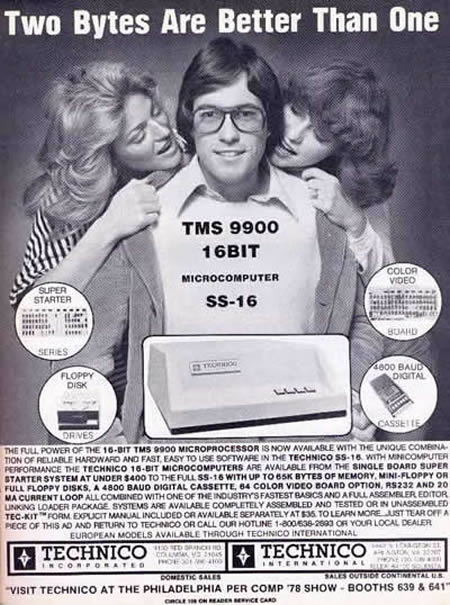
Texas Instruments TI 9900 Processor - 1978
Check them out, and if you know of more, let me know in the comments
September 27th, 2010 ~ by admin
Wired has an interesting article about several prototypes of rather historical devices. Of much interest are the Apple 1, and the Atari 2600 although the doorbell powered Moog is pretty classy as well.
Take a look at the Atari 2600 prototype and notice that they used a MOS 6502 in it. The final version used the lower cost (and smaller) MOS (or Synertek) 6507.
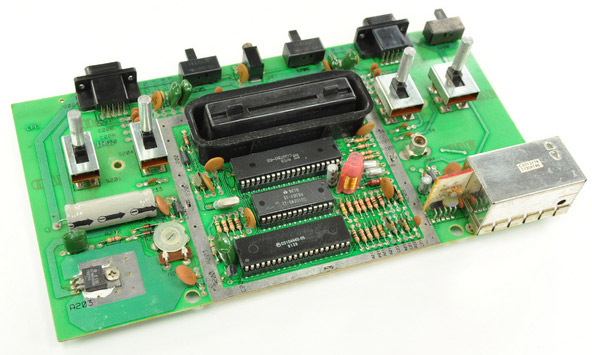
Atari 2600 Motherboard - 6507 CPU
When designing a product, it often is easier to use the standard full featured version of an IC for development work, and then as you refine the design, trim down to the least, and smallest components you can.
We also learn how Foxconn got its idea of low wages. Steve Jobs himself paid his sister a mere $1/board to assemble the Apple 1.
Its interesting to see how prototypes can be so vastly different from the finished product. A fact that design engineers know all to well. “I have to put all of THAT into what?”
September 20th, 2010 ~ by admin
Here is an interesting project. Take very high resolution photography of a MOS 6502 die (such as that the powered the Apple 1) and use it to construct a simulater in Java that allows you to program the 6502 and watch it, on a transistor level, as it performs the program.
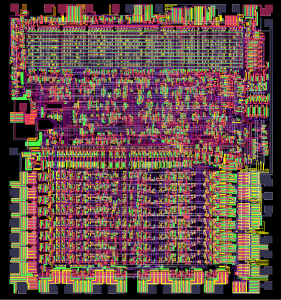
6502 Die - Visual 6502
An awesome way to see PHYSICALLY what happens for each and every instruction. And what a great processor to do so on. Ironically the LCD flat panel monitor you may be using? It may well be powered by a 6502 (Novatek used them in their flat panel controllers)
Check it out at Visual 6502
September 15th, 2010 ~ by admin
In 1976 the fasted normal processor ran at around 5MHz (such as the RCA 1802). Personal computers really hadn’t been thought of, and mainframes were massive. It was then that Seymour Cray decided to build a Super Computer. A computer that would be better and faster then most anything that existed at the time.
The Cray-1 ran at a blistering 80MHz, and could work with a staggering 32MB of memory. This performance was not achieved in personal computers until the 1990’s. No single processor of 1976 could attain these speeds so Cray designed his own. Only 4 different types of ICs were used in the Cray-1 (2 types of quad-NAND gates and 2 types of SRAM) All of the logic was ECL (Emitter Coupled Logic) which was very fast, very power hungry, and produced a lot of heat. In all the Cray-1 used some 200,000 gates, many of which were solely used to add timing delays to make sure signaling did not generate standing waves or switching noise.
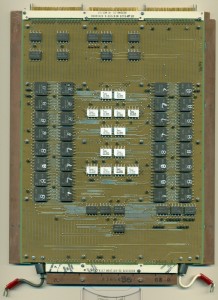
Original Cray-1 Circuit Board
Recently a man by the name of Chris Fenton decided to make a 1/10th WORKING scale model of the Cray-1A. This is no small feat, there is not a lot of surviving documentation for the Cray, nor is there much of any software left (they were mostly retired from service by 1990). Chris wished the Cray-1 to physically look like the Original (including the padded bench seat) as well as be binary code compatible. His implementation runs at 33MHz on a Xilinx Spartan-3E 1600 CPLD. Basically this is a dev board with a chip that has a complex array of programmable logic that you can program to do what you want. In this case 1.6 million gates, about 1.2 Million of which are used in the design, significantly more the the original.
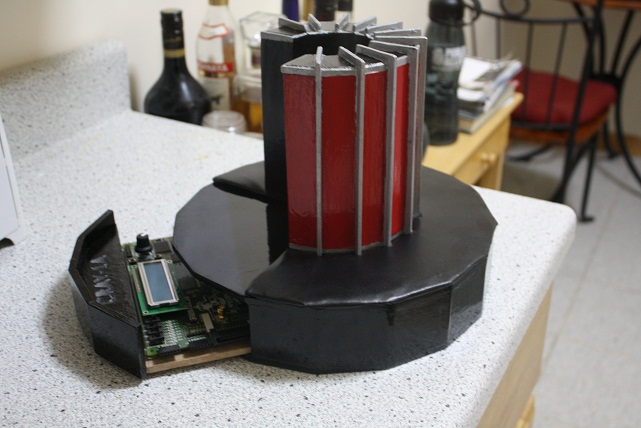
Cray-1A Model
The original Cray weighed in at 5.5 tons with the cooling system, and drew around 30kW of power. The 1/10th scale? will run on a few batteries. Supercomputers are still an important part of computing, but as vector processing expands (what the Cray was orginally diesgned for) such things as graphics cards can be used to perform much of the tasks of a supercomputer, and do so faster and cheaper.
Regardless, when people think of a Super Computer, they think of the Cray
September 4th, 2010 ~ by admin
iFixit has been doing a series of ‘retro’ teardowns. Looking at various early video game consoles. SO far they have done the following:
All of these systems are pretty interesting designs, however we are going to take a peek at the RCA Studio II. This was RCAs try at the video game console market that was emerging in the 1970s. It sadly was outclassed soon after its introduction by the likes of the Atari 2600 and was discontinued after a mere 2 years. At the heart of the Studio II was a CPU that RCA developed in 1976, a CPU that has outlived the Studio II, and many many other consoles, in fact the RCA COSMAC 1802 (the single chip implementation of the 2 chip 1801) is still made today by Intersil.
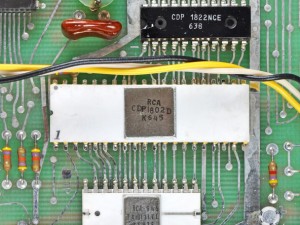
RCA Studio II 1802 Processor - 1976
The 1802 in the console iFixit used is a very uncommon white ceramic package, and is dated 7645, the 1802 was introduced in the first half of 1976 so this is a very early example. The 1802 was one of the first static CMOS designs. It didn’t have a minimum clock frequency so could be sped up/down according to the needs of the design (and power constraints). In the Studio II it ran at 1.7MHz. Other versions ran at 3.2MHz-6.4MHz. One interesting note with the design of the COSMAC was that its frequency responded nearly linearly with supply voltage. At the standard supply of 5V the frequency was 3.2MHz, However, double the supply voltage to 10V and the 1802 would be able to run at 6.4MHz (this only on certain specs of the chip obviously)

Harris CDP1802ACD3 -1992
Today the 1802, due to its flexible 16×16 register design, and well known reliability in harsh environments lives on in dozens of satellites circling the Earth. It was also used as the main computer (6 1802s actually) in the Galileo deep space mission to Jupiter. Many of the CPU’s designed in the 1970s (and often used in video games of the time) still are made (by Intersil now) and used today. THe 1802, 6502, PIC16, and 2901 to name a few. So next time you enjoy the weather report, or watch some satellite TV, its likely that a CPU designed over 35 years ago is being used to get that content to you.
May 14th, 2010 ~ by admin
I was out of town for a couple weeks visiting family. My friends were of course ‘taking care’ of The CPU Shack while I was gone. Upon my return I entered the Shack and this is what I found:

Yah thats over 100 boxes of CPUs that came in the 14 days I was gone, all stacked in the entrance to the rest of my house. Welcome to The Shack!
February 11th, 2010 ~ by admin
Seems this picture is making its rounds:
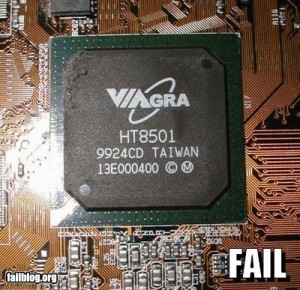
VIA HT8501
It is a VIA HT8501/VT8501 North Bridge, used on Socket 7 systems. It included Trident Blade 3D Graphics
Commonly known as the Apollo MVP4 Chipset. I suppose it adds new meaning to integrated Trident Blade. Its no wonder VIA didnt use this branding for long lol. If your system stays up for more then 4 hours….
September 4th, 2009 ~ by admin
Its chip related I suppose, but mostly just really cool and they make awesome desktop wallpapers.
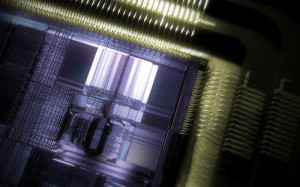
Die Wallpaper
Check out more at Lifehacker











